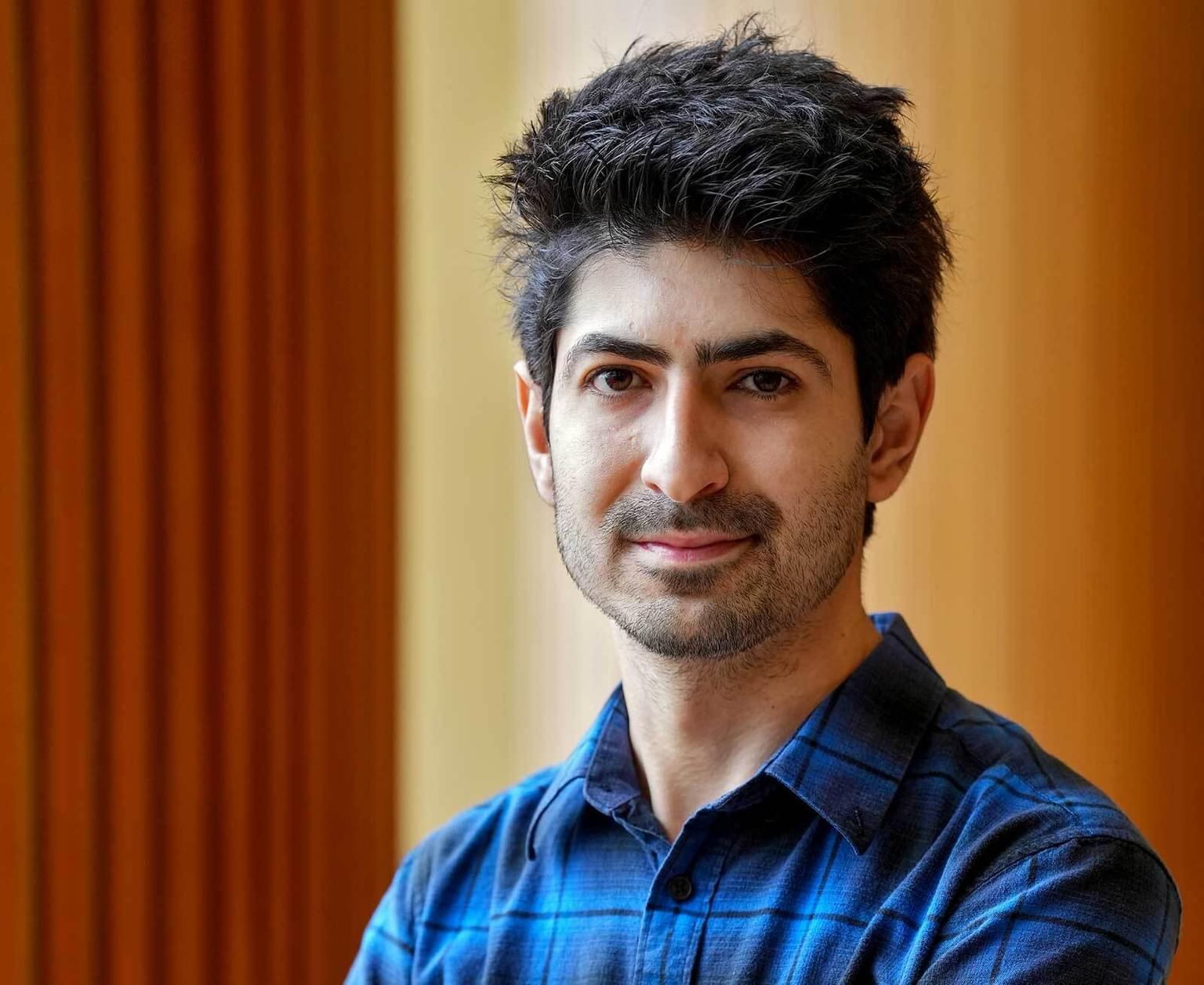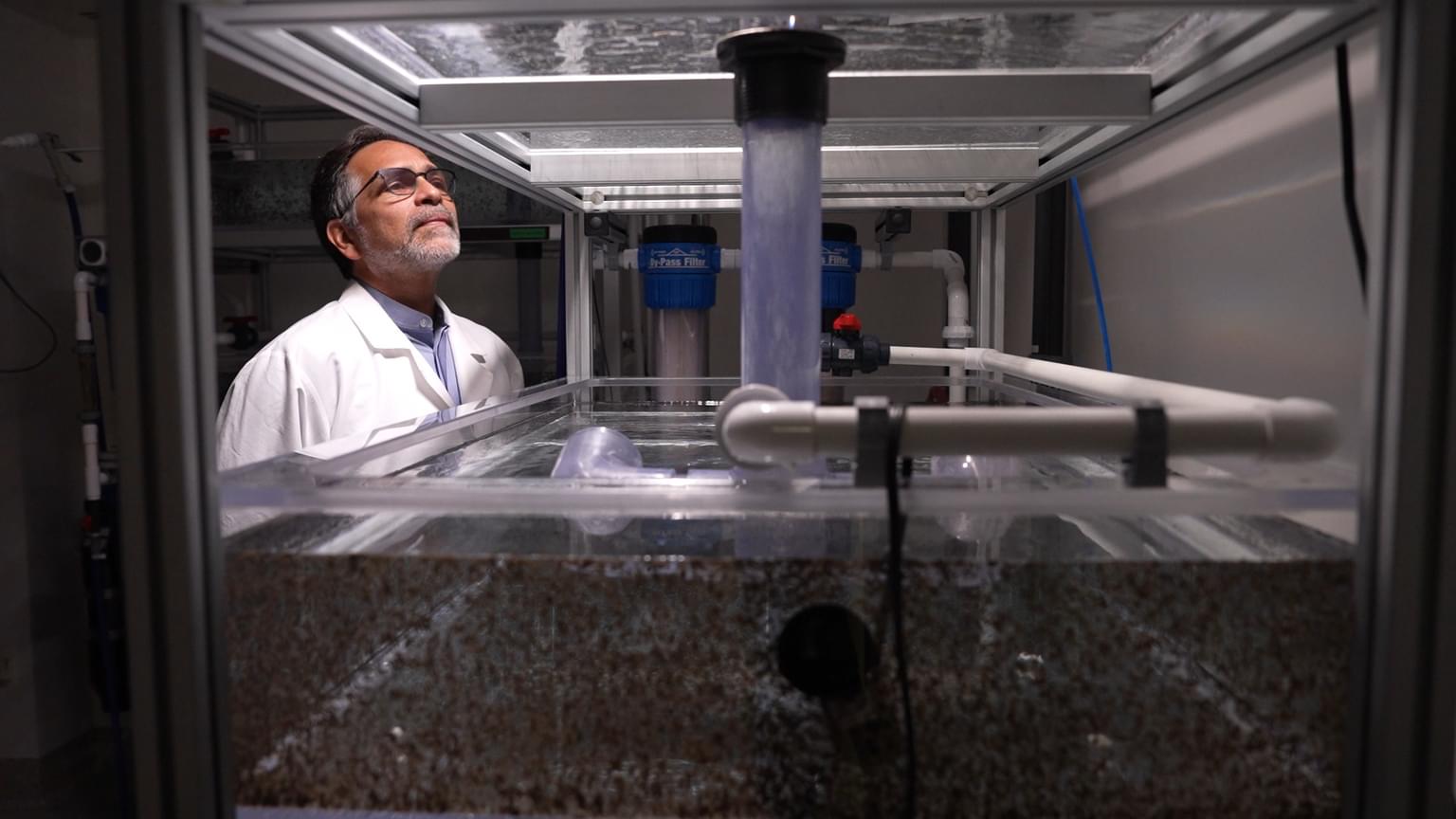Ariel Bazzini’s life is dominated by three loves—family, science, and soccer. Some of his earliest childhood memories are built around playing soccer near his home in Buenos Aires, Argentina, or football, as it’s known there. Then, when he was around 15, he heard about the Human Genome Project and was hooked for life on science.
Bazzini received a PhD in molecular biology in 2007 from the University of Buenos Aires. For his doctoral dissertation, he studied plant genetics in the laboratory of Sebastian Asurmendi, PhD, at the Institute of Biotechnology in Argentina’s National Institute of Agricultural Technology (INTA). He started off studying ways to protect plants from viral infections, which led to an interest in investigating molecular gene interactions between hosts and pathogens. Around the same time, other scientists were uncovering important roles for small RNAs called microRNAs as master gene regulators. Since then, Bazzini has immersed himself in that RNA world to understand how genes are regulated.
His passion for microRNAs took him to Yale University next, where he was a postdoctoral fellow and subsequently an associate research scientist in the laboratory of Antonio J. Giraldez, PhD, in the Department of Genetics. Bazzini’s current focus on the regulation of gene expression in vertebrates originated during his time at Yale. Moving from plants to zebrafish was challenging; however, Bazzini enjoys the faster pace of the research.
And while Bazzini’s research programs now involve fish, his family finds it somewhat surprising because when fishing with his brother and cousin, Bazzini never wanted to touch a fish and, in fact, has a mild allergy to them.
Bazzini joined the Stowers Institute as an assistant investigator in 2016. Bazzini’s wife, Florencia del Viso, PhD, also works at the Institute in the Gibson Lab.
What drew you to science as a career? What are your earliest memories related to science
My mother is a hematologist and would take me to the hospital where she worked. It was then that I learned that single mutation or translocation in one gene could cause terrible blood diseases. When I was in high school, I heard for the first time that the human genome had been sequenced. I found that extremely interesting because by identifying many more genes, scientists could start understanding their various functions. We knew the sequence—now we needed to understand it! I was stunned to learn that most human diseases were related to abnormal gene function.
I also remember my mom traveling around the world going to hematology conferences and coming back with information about the advances that biologists were making in this area of research. From one of her trips, she brought home a micropipetter for her hospital. In the late 1990s, it was very hard to get one of these instruments for transferring liquids in Argentina, and I was amazed at how much easier it was to use compared to squeezing a rubber bulb pipetter or using your mouth!
What brought you to the United States from Argentina? What are some of the differences between conducting science in the two countries?
Science, science and science!!! I love how dynamic science is in the US. The speed at which you can develop an idea and then actually conduct an experiment is just amazing.
I love Argentina. My country has incredibly good scientists, but the economy is not strong and that has an impact on the scientific community. Despite this situation, there are many groups doing amazing research with very low budgets, and our public universities are still generating outstanding students even on reduced budgets.
Ordering scientific supplies in Argentina was sometimes a multiple-week ordeal. Here in the US, you can usually get a similar shipment in only 24 hours. However, the situation in Argentina was a tremendous learning opportunity because it made us think very deeply and in advance about the entire experiment. And when the mail carrier arrived with the delivery of supplies months later, it was like getting a Christmas present!!!
I hope the economic situation will change for scientists in Argentina and the rest of Latin America, but in the meantime, I try to support the scientists there as much as I can.
How is soccer different here than when you played in Argentina?
In Argentina, I founded a team with my brother and we played for more than ten years. We think that during those ten years more than 200 friends and friends-of-friends played. I really enjoyed having a team with my cousins and friends from my elementary school, high school, and university, all of them on the same team. All the Argentinean leagues or tournaments are very competitive, sometimes rough, but we had so much fun.
Playing in the US is completely different for me. The styles are very different. Here, people get excited when you make a long pass. In Argentina, it’s all about dribbling. However, I have been impressed by how much recreational soccer has improved in the US, especially in Kansas City.
Do you have other hobbies besides soccer?
I love playing with my two kids. They are very demanding, but my wife and I love to do things with them, to be outside with them, to travel. We also take them to the swimming pool and we climb trees. We both think that Kansas City is a great place to live and grow a family.
Growing up in Argentina, we lived in a huge city (Buenos Aires) in an apartment, so my parents only allowed me to have small dogs, Yorkshire terriers, which weigh maybe 15 pounds. Now, living in Kansas, where the space is not a big limitation, we have a Newfoundland dog. She is only nine months old, but she already weighs over 95 pounds. She looks like a small brown bear yet she is extremely sweet with the kids.
I also love cooking and building things with my hands. Right now, I am trying to make an Argentine concrete grill and stone oven for pizza, but so far it is only 30 percent done. Having a lab and two kids doesn’t leave much time!
When talking to nonscientists, what do you tell them about your lab and its projects? What do you say to help them understand the science?
It is always a challenge to talk about my research work with lay people, but we HAVE to do it. The scientific community needs to open up and talk.
I usually tell people that we are made up of a bunch of cells. On your first day, in your mother’s belly, you were a single cell, then your cell started dividing and you went from two to four to eight cells, then developed as a baby. All your cells have the same information, the same genes, but somehow those cells differentiated, and you became who you are. You are a well-developed organism that talks, walks, thinks, and maybe even plays soccer. My research team works to understand how one cell becomes a complex organism, and how and which genes turn on, turn off, or modulate cell division and cell differentiation to give rise to a very complex and unique creature.
What do you like best about the Institute?
The thing I enjoy most about being at Stowers is that we have the freedom to research whatever we want. Plus, the collaboration that occurs between the labs here makes it an interesting and supportive environment. The incredible support from the core facilities allows us to explore techniques and fields that we might not be experts in. With their dedication and contagious motivation, our group gets to use a large variety of molecular tools. For me, the most invaluable resources of the Institute are the people. “Good people make the difference,” I’ve heard. The Stowers Institute is full of great people and outstanding scientists who are always willing to help and talk through a scientific problem.



